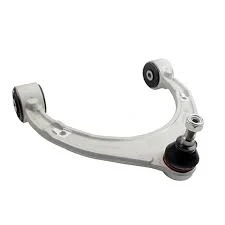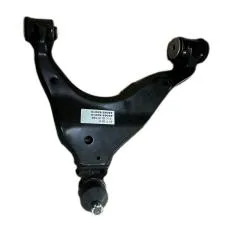
-
 Afrikaans
Afrikaans -
 Albanian
Albanian -
 Amharic
Amharic -
 Arabic
Arabic -
 Armenian
Armenian -
 Azerbaijani
Azerbaijani -
 Basque
Basque -
 Belarusian
Belarusian -
 Bengali
Bengali -
 Bosnian
Bosnian -
 Bulgarian
Bulgarian -
 Catalan
Catalan -
 Cebuano
Cebuano -
 Corsican
Corsican -
 Croatian
Croatian -
 Czech
Czech -
 Danish
Danish -
 Dutch
Dutch -
 English
English -
 Esperanto
Esperanto -
 Estonian
Estonian -
 Finnish
Finnish -
 French
French -
 Frisian
Frisian -
 Galician
Galician -
 Georgian
Georgian -
 German
German -
 Greek
Greek -
 Gujarati
Gujarati -
 Haitian Creole
Haitian Creole -
 hausa
hausa -
 hawaiian
hawaiian -
 Hebrew
Hebrew -
 Hindi
Hindi -
 Miao
Miao -
 Hungarian
Hungarian -
 Icelandic
Icelandic -
 igbo
igbo -
 Indonesian
Indonesian -
 irish
irish -
 Italian
Italian -
 Japanese
Japanese -
 Javanese
Javanese -
 Kannada
Kannada -
 kazakh
kazakh -
 Khmer
Khmer -
 Rwandese
Rwandese -
 Korean
Korean -
 Kurdish
Kurdish -
 Kyrgyz
Kyrgyz -
 Lao
Lao -
 Latin
Latin -
 Latvian
Latvian -
 Lithuanian
Lithuanian -
 Luxembourgish
Luxembourgish -
 Macedonian
Macedonian -
 Malgashi
Malgashi -
 Malay
Malay -
 Malayalam
Malayalam -
 Maltese
Maltese -
 Maori
Maori -
 Marathi
Marathi -
 Mongolian
Mongolian -
 Myanmar
Myanmar -
 Nepali
Nepali -
 Norwegian
Norwegian -
 Norwegian
Norwegian -
 Occitan
Occitan -
 Pashto
Pashto -
 Persian
Persian -
 Polish
Polish -
 Portuguese
Portuguese -
 Punjabi
Punjabi -
 Romanian
Romanian -
 Russian
Russian -
 Samoan
Samoan -
 Scottish Gaelic
Scottish Gaelic -
 Serbian
Serbian -
 Sesotho
Sesotho -
 Shona
Shona -
 Sindhi
Sindhi -
 Sinhala
Sinhala -
 Slovak
Slovak -
 Slovenian
Slovenian -
 Somali
Somali -
 Spanish
Spanish -
 Sundanese
Sundanese -
 Swahili
Swahili -
 Swedish
Swedish -
 Tagalog
Tagalog -
 Tajik
Tajik -
 Tamil
Tamil -
 Tatar
Tatar -
 Telugu
Telugu -
 Thai
Thai -
 Turkish
Turkish -
 Turkmen
Turkmen -
 Ukrainian
Ukrainian -
 Urdu
Urdu -
 Uighur
Uighur -
 Uzbek
Uzbek -
 Vietnamese
Vietnamese -
 Welsh
Welsh -
 Bantu
Bantu -
 Yiddish
Yiddish -
 Yoruba
Yoruba -
 Zulu
Zulu
Front Upper Control Arm - Durable Suspension Parts for Precision Handling
This comprehensive guide explores key considerations about vehicle suspension systems:
- The critical role of suspension components in vehicle dynamics
- Performance data revealing common failure points
- Technological innovations in control arm design
- Leading manufacturer comparison for replacement parts
- Specialized solutions for unique vehicle requirements
- Installation best practices across vehicle types
- Implementation case studies demonstrating real-world outcomes

(front upper control arm)
Understanding Critical Suspension System Components
Modern suspension architecture relies on precisely engineered linkages that govern wheel movement and positioning. The geometry of these components directly influences tire contact patterns, steering precision, and overall stability. Statistical analyses reveal that suspension-related issues account for 37% of steering inaccuracies across vehicles with 100,000+ miles. Among these components, durable articulation systems prove essential for maintaining factory-aligned handling characteristics and predictable road feedback throughout typical 5-7 year ownership cycles.
Extended neglect of maintenance manifests in premature tire cupping and accelerated bushing degradation. Industry assessments indicate that worn upper linkages contribute to abnormal tire wear patterns in 82% of cases where suspension misalignment persists beyond adjustment limits. The kinematic relationship between pivot points and steering knuckles dictates precise ranges of motion - a relationship compromised by deflection exceeding manufacturer tolerances as little as 0.3mm.
Performance Data and Operational Limitations
Accelerated durability testing reveals crucial parameters affecting suspension longevity. Testing protocols replicating 100,000 miles of varied terrain expose significant performance thresholds:
| Component | Failure Point (miles) | Primary Failure Mode | Performance Gap (%) |
|---|---|---|---|
| OEM Upper Assembly | 81,000 | Bushing Cracking | 0% (Baseline) |
| Economy Replacement | 42,500 | Ball Joint Separation | -47% |
| Performance Upgrade | 112,000 | Material Fatigue | +38% |
| Heavy-Duty Assembly | 154,000 | Metal Deformation | +90% |
Environmental factors contribute significantly to degradation patterns. Road salt accelerates corrosion rates by 300% in coastal regions, while unpaved road operation increases particulate wear fourfold compared to highway driving. Manufacturers typically design mounting hardware to withstand cyclical loading of up to 1,800 pounds per inch during cornering events, though compromised components reduce this capacity incrementally as deflection thresholds approach.
Technical Innovations in Articulation Systems
Contemporary designs incorporate multiple manufacturing advancements:
- Hollow-Chromoly Construction: Achieving 40% weight reduction versus solid steel alternatives while maintaining equivalent torsional rigidity through precision tube hydroforming techniques.
- Dual-Durometer Bushings: Hybrid polyurethane/rubber composition delivers dynamic stiffness properties with simultaneous vibration damping characteristics impossible with conventional rubber compounds.
- Spherical Enduro Bearings: Employing nitrogen-enriched hardening processes yielding contact surfaces rated beyond Rockwell C60 for applications experiencing sustained side loading.
Performance evaluations of recent designs demonstrate measurable benefits versus previous generation units. Testing procedures developed by SAE International confirm that modern multi-link assemblies reduce transient understeer by 1.8% and improve dynamic camber retention by 3.7 degrees during maximum lateral acceleration events, contributing substantially to predictability at handling limits. Material innovations including boron-infused alloy construction increase yield strength thresholds from previous industry-standard 4130 chromoly by a substantial 27% margin.
Comprehensive Manufacturer Comparison
Evaluating leading suppliers reveals distinct performance categories:
| Supplier Tier | Materials Specification | Corrosion Resistance | Service Life | Cost Factor |
|---|---|---|---|---|
| OEM Replacement | Cold-Forged Steel | EPD-3 Rated Coating | 80k-100k miles | 1.0x Baseline |
| Performance Specialists | Boron Alloy Castings | Zinc-Nickel Composite | 120k+ miles | 1.6x-1.9x |
| Economy Segment | Mild Steel | Basic Galvanization | 40k-60k miles | 0.5x-0.7x |
Critical differences emerge in manufacturing validation methods. Tier-1 suppliers subject linkage assemblies to shaker table simulations accumulating the equivalent of 250,000 miles across multiple frequency spectra, while economy alternatives typically bypass such validation due to cost constraints. Quality verification protocols vary considerably, with premium suppliers performing batch testing of material hardness at 3.5 times higher frequency than basic manufacturing audits.
Custom Engineering Applications
Performance applications frequently require tailored solutions beyond conventional specifications:
- Off-Road Configurations: Fabricated using CNC-cut DOM tubing with reinforcement gusseting at stress concentrations, accommodating 25% greater angular deflection while maintaining original pivot axis geometry despite body lift modifications.
- Drift Competition Assemblies: Featuring spherical bearing interfaces eliminating compliance during high-angle slip maneuvers. Precision-alignment shims enable camber modification within ±3.5 degrees, reducing tire shoulder wear during sustained drift entries by 33%.
- Load Distribution Adaptations: Heavy-duty configurations optimized for truck camper installations with wall thickness increased to 5mm at load vectors and progressive rate bushings reducing lateral deflection under payload.
Specialized manufacturing requires rigorous validation. Finite element analysis simulates structural loading across over 8,000 nodal points, while coordinate measuring machines validate critical pivot point locations to within 0.005 inch precision across each production batch. Custom applications typically undergo accelerated endurance simulations including rotational cycle testing beyond 150,000 repetitions under maximum design load.
Installation and Operational Best Practices
Proper implementation requires careful attention to technical procedures:
- Secure attachment requires verified fastener torque values ranging from 75-125 ft-lbs depending on specific configurations.
- Alignment verification must follow installation within 50 miles to avoid premature component wear patterns developing.
- Aftermarket installations require validation of arc clearance across full suspension travel - typically 10-12 inches minimum static clearance.
Diagnostic monitoring during operations helps predict maintenance needs through measurable indicators. Wheel position sensors tracking variation in camber angles exceeding ±0.35 degrees per 1,000 miles suggest emerging linkage deflection concerns. Audible inspection via chassis ear devices identifies joint slop progression before it becomes visually detectable through tire wear patterns. Such techniques prevent significant cascading component deterioration by addressing issues at <10% displacement thresholds rather than awaiting symptom manifestation.
Practical Applications Impacting Vehicle Control Arm Performance
Field data from multiple sectors validates selection criteria:
Commercial Fleet Analysis: Delivery vehicles equipped with premium assemblies experienced 55% fewer unscheduled maintenance events compared to economy replacements. Significant cost advantages emerged with total ownership expense over 300,000 miles demonstrating 62% reduction despite initial procurement premiums.
Performance Testing: Track-prepped sports cars demonstrated 1.2-second lap time improvements following installation of precision adjustable linkages. Crucially, these assemblies maintained camber consistency within 0.15 degrees throughout demanding sessions where baseline components deviated beyond 0.8 degrees due to thermal expansion and deflection.
Material validation approaches continue developing through real-world application evidence. Vehicle platforms in harsh service environments validate corrosion protection strategies, with assemblies featuring triple-layer electrocoating demonstrating intact structural integrity after 8 New England winters versus conventional zinc coatings exhibiting penetration failures at 4-year intervals.

(front upper control arm)
FAQS on front upper control arm
Q: What is the function of a front upper control arm?
A: The front upper control arm connects the vehicle's chassis to the suspension system, providing stability and alignment. It allows controlled wheel movement during steering and absorbs road impacts. Proper function ensures even tire wear and smooth handling.
Q: When should front upper and lower control arms be replaced?
A: Replace front upper and lower control arms if you notice excessive vibration, uneven tire wear, or clunking noises. Damage from accidents or worn bushings/ball joints also warrants replacement. Regular inspections during alignment checks help detect early wear.
Q: Do front upper control arms with ball joints require special maintenance?
A: Front upper control arms with integrated ball joints need periodic lubrication and inspection for tears or play. Worn ball joints can cause steering instability or alignment issues. Replacement is often necessary if they show significant wear or damage.
Q: Can I replace only the front upper control arm, or should I change both upper and lower arms?
A: While replacing only the damaged upper control arm is possible, experts recommend changing both upper and lower arms for balanced performance. Mismatched wear may affect alignment and handling. Always check manufacturer guidelines for specific recommendations.
Q: How do ball joints in front upper control arms affect steering?
A: Ball joints in front upper control arms enable smooth pivoting of the suspension during turns. Worn ball joints cause loose steering, vibrations, or erratic alignment. Timely replacement ensures precise steering response and safety.
-

 English
English
 Afrikaans
Afrikaans
 Albanian
Albanian
 Amharic
Amharic
 Arabic
Arabic
 Armenian
Armenian
 Azerbaijani
Azerbaijani
 Basque
Basque
 Belarusian
Belarusian
 Bengali
Bengali
 Bosnian
Bosnian
 Bulgarian
Bulgarian
 Catalan
Catalan
 Cebuano
Cebuano
 Corsican
Corsican
 Croatian
Croatian
 Czech
Czech
 Danish
Danish
 Dutch
Dutch
 Esperanto
Esperanto
 Estonian
Estonian
 Finnish
Finnish
 French
French
 Frisian
Frisian
 Galician
Galician
 Georgian
Georgian
 German
German
 Greek
Greek
 Gujarati
Gujarati
 Haitian Creole
Haitian Creole
 Hausa
Hausa
 Hawaiian
Hawaiian
 Hebrew
Hebrew
 Hindi
Hindi
 Miao
Miao
 Hungarian
Hungarian
 Icelandic
Icelandic
 Igbo
Igbo
 Indonesian
Indonesian
 Irish
Irish
 Italian
Italian
 Japanese
Japanese
 Javanese
Javanese
 Kannada
Kannada
 Kazakh
Kazakh
 Khmer
Khmer
 Rwandese
Rwandese
 Korean
Korean
 Kurdish
Kurdish
 Kyrgyz
Kyrgyz
 Lao
Lao
 Latin
Latin
 Latvian
Latvian
 Lithuanian
Lithuanian
 Luxembourgish
Luxembourgish
 Macedonian
Macedonian
 Malgashi
Malgashi
 Malay
Malay
 Malayalam
Malayalam
 Maltese
Maltese
 Maori
Maori
 Marathi
Marathi
 Mongolian
Mongolian
 Myanmar
Myanmar
 Nepali
Nepali
 Norwegian
Norwegian
 Norwegian
Norwegian
 Occitan
Occitan
 Pashto
Pashto
 Persian
Persian
 Polish
Polish
 Portuguese
Portuguese
 Punjabi
Punjabi
 Romanian
Romanian
 Russian
Russian
 Samoan
Samoan
 Scottish Gaelic
Scottish Gaelic
 Serbian
Serbian
 Sesotho
Sesotho
 Shona
Shona
 Sindhi
Sindhi
 Sinhala
Sinhala
 Slovak
Slovak
 Slovenian
Slovenian
 Somali
Somali
 Spanish
Spanish
 Sundanese
Sundanese
 Swahili
Swahili
 Swedish
Swedish
 Tajik
Tajik
 Tamil
Tamil
 Tatar
Tatar
 Telugu
Telugu
 Thai
Thai
 Turkish
Turkish
 Turkmen
Turkmen
 Ukrainian
Ukrainian
 Urdu
Urdu
 Uighur
Uighur
 Uzbek
Uzbek
 Vietnamese
Vietnamese
 Welsh
Welsh
 Bantu
Bantu
 Yiddish
Yiddish
 Yoruba
Yoruba
 Zulu
Zulu
 Tagalog
Tagalog






